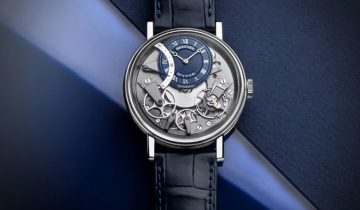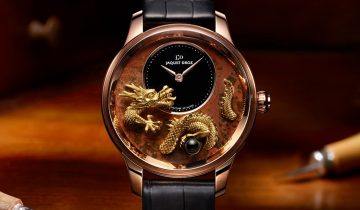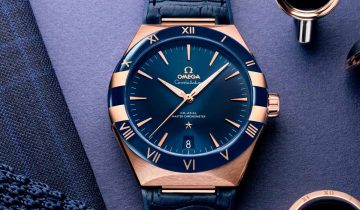Traditionally a producer of aviation instruments, Breitling diversified into the field of divers’ watches with the SuperOcean collection in 1950s. Over time, the SuperOcean embraced the introduction of several modifications. In 1995, the Colt SuperOcean was launched to incorporate the high standards set by the Navy SEAL for its military divers. The exquisite level of technical superiority displayed by the Colt was amplified in the Colt SuperOcean Professional in 1998. Further developed by the SuperOcean Professional in 2000, Breitling’s success in this realm peaked with the 2010 SuperOcean collection.
The self-winding mechanical movements of most watches from the SuperOcean collection are chronometer certified from COSC for immaculate timekeeping. Exceedingly watertight, these watches uniformly provide complete protection from water damage up to varying depths, even going up to an unprecedented and patented 2000m with the SuperOcean Chronograph M2000. This particular model also records time up to one-tenth of a second. The case backs of all watches are screwed in with screw down crowns to ensure smooth functioning of the device even underwater. The watches are made pressure resistant with inbuilt helium valves.
The dial sports three sub dials and date windows, for multifaceted functions. The sturdy 46mm case of each variant is protected by glare proof cambered sapphire crystal, to render it scratch-resistant. Each variant boasts unidirectional ratcheted bezels that are time marked to allow professional divers to keep track of their activities.
The aesthetic appeal of the SuperOcean collection lies in its oversized hands and bold Arabic numeral or stick appliques. Breitling offers a wide range of colours on the index markers and hands of the timepieces from the SuperOcean line, though the dials remain almost uniformly matte black. A choice in bracelets, from amongst Leather, Diver Pro, Ocean Racer, Professional III, and others, is offered for all models. Watches from this series are renowned for their sturdy and reliable build, along with their accurate timekeeping features.

The machinery inside a watch that keeps things ticking is called the movement or a calibre. A synonym of size, the word ‘calibre’, first used as a watchmaking term in 1715, originally referred to the build of a watch movement—the layout, dimensions, shape and size of the wheels, barrels, bridges and so on. Today the word is a substitute for movement, the complete mechanism with the mainspring, escape wheel, bridges, gear train, and other components, including the rotor in automatic watches. Calibres are either mechanical or quartz-based. While the latter are powered mostly by a battery, the former can either be manual winding, or self-would by an oscillating mass or rotor.



